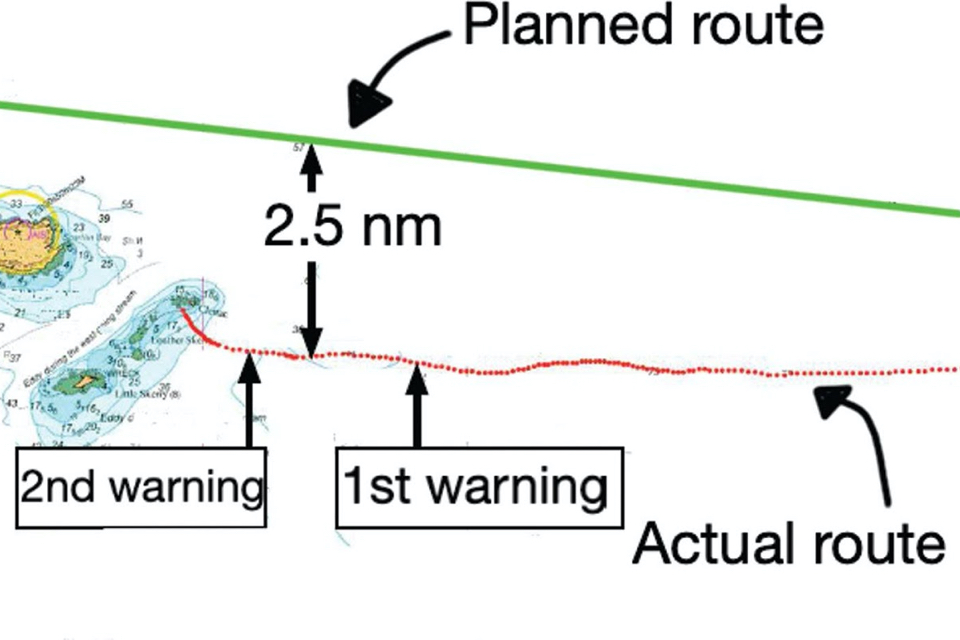Distractions on the bridge are often cited in investigation reports as contributing factors and now more than ever, with mobile phones and computers. In a recent Mars Report, a vessel grounded as the officer of the watch was watching music videos on his phone.
The Mars reports are compiled (anonymously) by The Nautical Institute to prevent other accidents from happening. A summary of what happened in this case:
A small coastal trader was underway in darkness and calm seas at a speed of almost eight knots. There was a change of officers on the bridge. At the time, the vessel was on autopilot “track mode” steering. This mode applies the necessary helm to follow the track selected on the ECDIS.
The relieving officer of the watch (OOW) deselected track mode steering and switched to “course to steer” mode, setting the heading at 279°. The OOW then sat in the chair on the port side of the bridge and started watching music videos that were being streamed to his mobile phone via wi-fi.
About two hours later, the OOW looked at the radar display and realised that the vessel was to port of the planned track. On the radar, he also observed two small islands ahead of the vessel and decided to proceed between them, more or less on his present course, with a plan to alter course to starboard afterwards to regain the planned track.
About thirty minutes later, a local coastguard officer warned the OOW by VHF radio that the vessel was running into danger. The OOW acknowledged the call, but did not change course. Some nine minutes later, the local VTS officer, having observed that the vessel was still heading into danger, called the vessel and issued a second warning.
During this conversation with the VTS officer, the OOW reduced the range scale on the port radar and added a chart overlay to the display. He then realised that his plan to pass between the two islands was unsafe, because there was a shallow reef between them. He quickly selected hand-steering and put the rudder full to starboard in an attempt to steer away from danger.
The vessel grounded nonetheless at a speed of seven knots. Seconds before grounding, the ECDIS depth alarm sounded as the vessel crossed over the ten-metre depth contour. Some three days later, after a partial cargo discharge, the vessel was refloated and brought to a safe haven.
Advice from The Nautical Institute
- A planned route is usually safer than an improvised one. Stick to your planned route.
- Avoid distractions while on watch – navigate your vessel.
- If a shore authority calls your ship to say you are running into danger, call the master immediately and evaluate your position with care.
From the original investigation report (MAIB UK 12/2019, published in October 2019), it can be deduced that the vessel concerned was general cargo vessel Priscilla. The accident occurred on Pentland Skerries, Pentland Firth, Scotland, on 18 July 2018.








